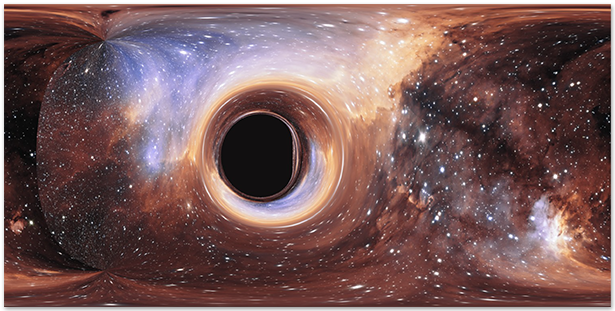Creating Academy Award-Winning Visuals Starts with Mathematica and the Wolfram Language
Kip Thorne, physicist, New York Times bestselling author, and professor emeritus at Caltech, has ignited fans' passion for science through his work on the movie Interstellar. The sci-fi adventure, which tells the story of a team of explorers as they travel through a wormhole to ensure the survival of humanity, won the 2015 Academy Award for Best Visual Effects. Some of its stunning effects were originally generated using Wolfram technologies.
The film sprang from a treatment coauthored by Thorne and producer Lynda Obst, and was turned into a Hollywood blockbuster by director Christopher Nolan, screenwriter Jonathan Nolan, composer Hans Zimmer, and the visual effects crew at Double Negative. The team faced a number of challenges, including producing images of a black hole with the gravitational lensing of a star field behind it. Thorne's solution was to begin by programming in the Wolfram Language, which underlies Mathematica. "I wrote down the equations and I tested them in Mathematica by integrating numerically and then building images with the ImageTransformation function," says Thorne.

The team also needed to place an accretion disk around the black hole to compute what it would look like to an IMAX camera—with light rays bending in the warped spacetime of the black hole—and model light propagation near wormholes. With Mathematica's numerical integration and ImageTransformation capabilities, Thorne could ensure his equations were producing the correct results. "Mathematica was my way of testing whether or not I had the equations right and providing a first cut of images to the visual effects team at Double Negative." In addition to his box-office success, Thorne's innovative approach led to publication in the American Journal of Physics and Classical and Quantum Gravity. The visualization techniques described in his articles are expected to be adopted in future films and research projects.
Thorne has a history with Mathematica that reaches beyond Interstellar. During his early career, he did all his programming in Fortran. But when Mathematica came along, he quickly switched over. "Mathematica changed everything, and I largely abandoned Fortran," says Thorne. By the 1990s, Mathematica was his go-to tool for doing numerical work and manipulations. He also used Mathematica to help generate many of the illustrations in his book, The Science of Interstellar. Written for a general audience, it contains more than 50 illustrations generated with the assistance of Mathematica. It spent five weeks on the New York Times Best Seller List and piqued moviegoers' interest in science and physics.
"I use [Mathematica] whenever I need to do a numerical computation or an algebra- or calculus-intensive computation. It's just a standard tool sitting on my desk," says Thorne. He has also used Mathematica to aid in generating many illustrations in Modern Classical Physics (coming July 2016) and assist in much of his research, including his ongoing collaboration with a team of physicists who simulate colliding black holes. Whether performing symbolic or numeric computations, Mathematica allows Thorne to spend more time focusing on the big picture. "It's very easy to use, and it's quick to provide reliable results," he concludes.
Get started with Wolfram technologies, or work with us to apply computational expertise to your projects.
Questions? Comments? Get in touch: 1-800-WOLFRAM, or email us »







